The ‘Sparkelberry’ hollies are flowering, which is not a showy event, but a necessity if there are to be bunches of red berries in autumn. A dozen paces down the hill a newly planted male counterpart ‘Apollo’ is also in bloom.
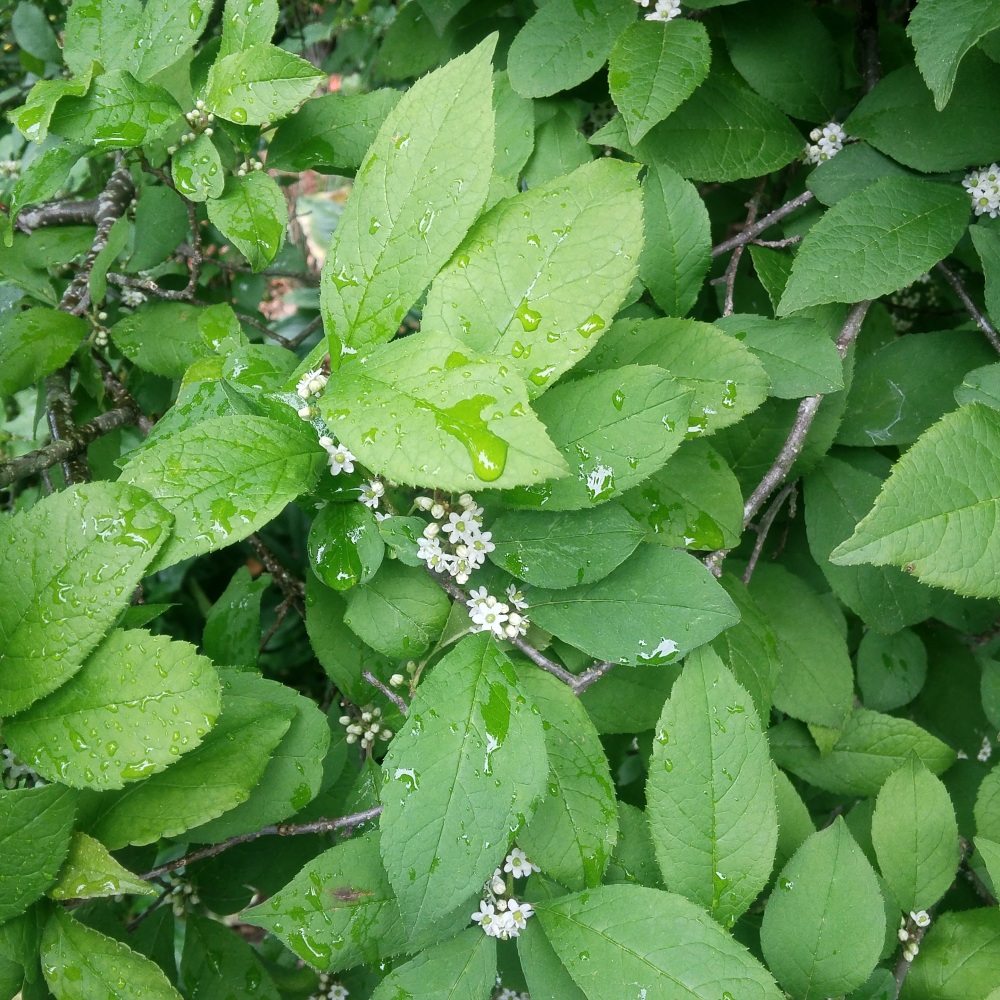
For several years, sparse berries have made the absence of a male pollinator obvious. Once, branches of the hollies arched under the weight of red berries, and what happened to the male, I don’t know. After talking about it, but doing nothing for too long, I finally got around to planting a pollinator this spring. Now, the only problem should be linking the male and females, but that is up to the bees. I trust they’ll make it work.
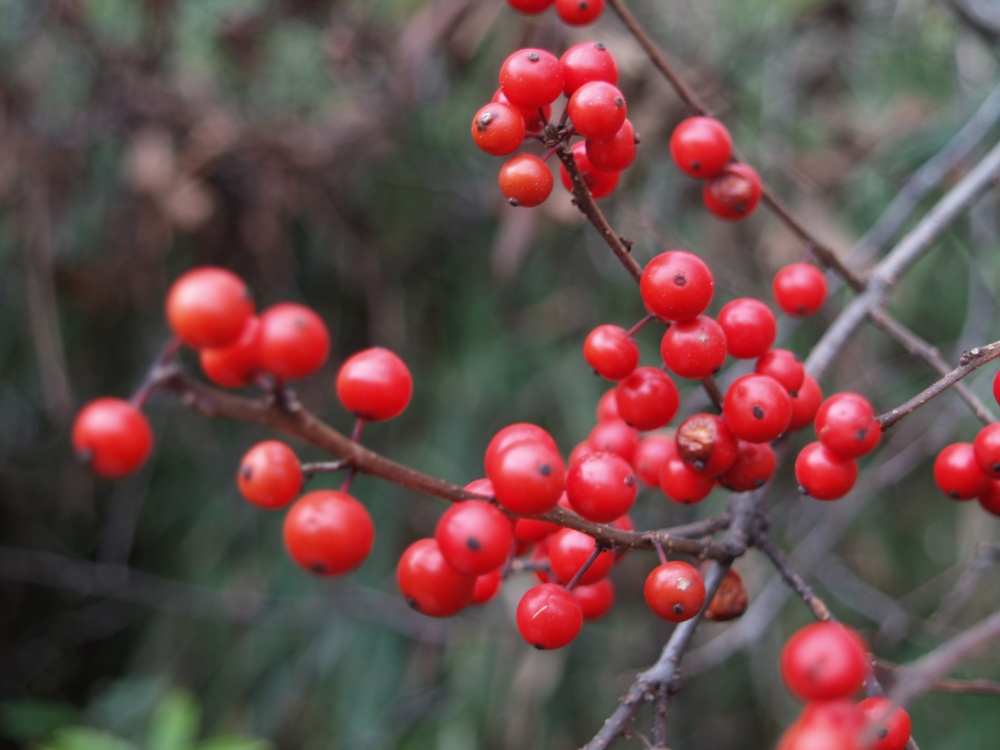 Other hollies in the garden flower earlier, and several already have green berries that will slowly ripen to red through the summer. It is often unclear to me which hollies require a separate male for pollination, and what other holly is the pollinator, but there is no doubt that ‘Sparkleberry’ and other deciduous hollies require male and females that flower at the same time.
Other hollies in the garden flower earlier, and several already have green berries that will slowly ripen to red through the summer. It is often unclear to me which hollies require a separate male for pollination, and what other holly is the pollinator, but there is no doubt that ‘Sparkleberry’ and other deciduous hollies require male and females that flower at the same time.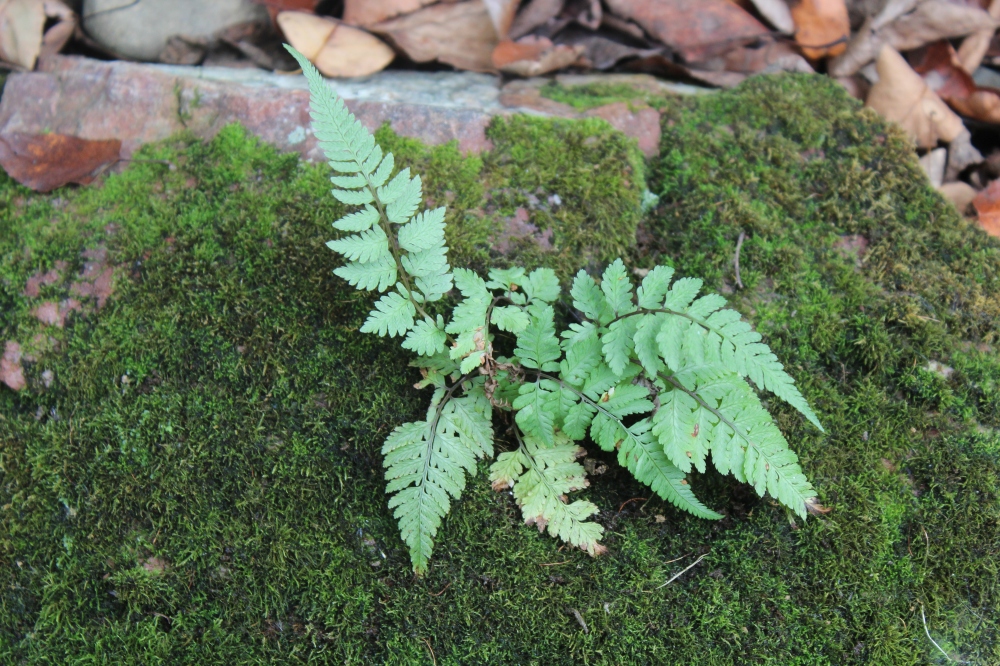
For whatever reason, there have never been so many hosta and fern seedlings (sporelings for ferns) in the garden. No doubt, damp conditions this spring have something to do with this. Some seedlings will remain, but others are growing too close to paths, and these will be weeded out.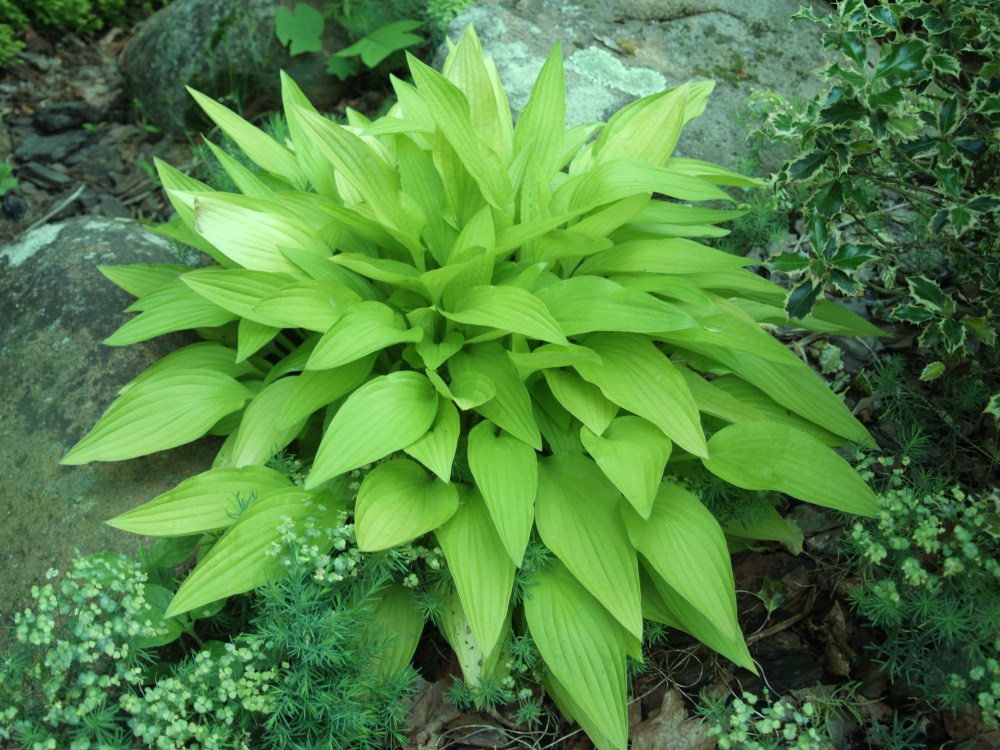
One seedling hosta that I’ve kept is an unremarkable, somewhat sickly looking yellow with narrow leaves. It is far from beautiful, but most of the seedlings are large leafed and green or blue-green, so the yellow leafed hosta earned its place for being different. Some of the hostas have been around long enough that I don’t recall which ones were planted from ones that are seedlings.
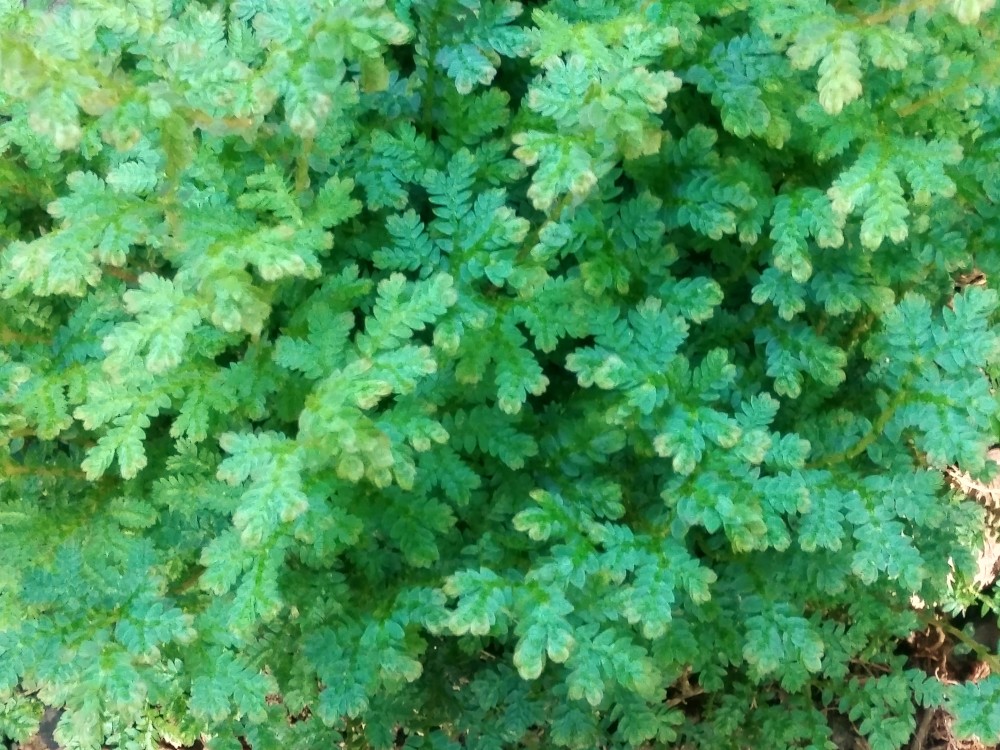
Recently, I transplanted a few small patches of a spike moss that has spread vigorously and evidently found a happy home. These do not have a typical root system, so the transplant process is only a matter of lifting the stems without injuring them, and anchoring them in the new location so they’re not blown out of the soil. After a few weeks, the transplants appear to be doing fine, but it will be months before I know if the new environment is conducive to growth.
Lovely DAve. Thank you! 😀
I will be interested to know how your peacock spikemoss is doing, as I recently bought some from our local native plant display garden to use as a groundcover between dark grey flagstones in an area of dappled shade. What kind of soil do you have in the area where it has been doing well?
Soils in the area where the spikemoss is planted are dry with more shade than sun. But, the mosses are growing mostly in leaf litter that holds more moisture than the root filled soil. In a slightly sunnier spot with better soil the spikemoss is not thriving as much. As with most things, I haven’t quite figured this out.